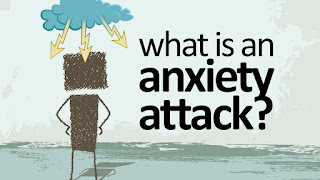 |
| Anxiety Attack |
Panic disorder is characterized by the
occurrence of anxiety attacks (panic attacks) in which a veryintense sense of
terror is experienced which is accompanied by physical symptoms, such as
tachycardia, shortness of breath, dizziness, a sensation of tingling, nausea
even in the most acute cases sensation of imminent death.
This process is the physical manifestation
of the anxiety process, it is a very annoying real sensation that impacts the
person who suffers from it, that the person tends to anticipate their attacks,
that is, live a continuous state of alert that the attacks reappear and that
makes them more intense and frequent.
ANXIETY ATTACKS
Anxiety attacks can occur at anytime,
anywhere and without warning, but fear reappears with more probability in those
situations in which a panic attack was suffered, hence the tendency to avoid
exposing oneself to such situations.
This disorder often entails a change of
life as the person stops doing tasks and activities for fear of new attacks,
which leads to depressed moods and a deep sense of uncontrollability over his
own body.
SYMPTOMS OF THE ANXIETY
ATTACK
·
Tachycardia
·
Chest pain
·
Difficulty
breathing
·
Dizziness
·
Palpitations,
heart jolts or elevation of heart rate
·
Sweating
·
Tremors or
shaking
·
Feeling
short of breath or shortness of breath
·
Feeling
choked
·
Oppression
or chest discomfort
·
Nausea or
abdominal discomfort
·
Instability,
dizziness or fainting
·
Derealization
or depersonalization
·
Fear of
losing control
·
The
feeling of imminent death
·
Paresthesias
(feeling of numbness or tingling)
·
Chills or
suffocations
TREATMENT OF THE ANXIETY ATTACK
Therapy for anxiety
attacks consists of different phases:
1. Control of physiological body activation
through training in breathing, muscle relaxation and vagal innervation.
2. Redefinition of the fears produced by
this physiological activation through cognitive therapy.
3. Habituation and control of panic
symptoms, because of the different exposure strategies, such as interoceptive
exposure to dreaded body sensations and live exposure, which involves the
exposure in real life in a systematic and progressive to the dreaded
situations.
All these strategies are supported by
materials and help documents for an optimal development of the therapy.

Comments: 0
Post a Comment